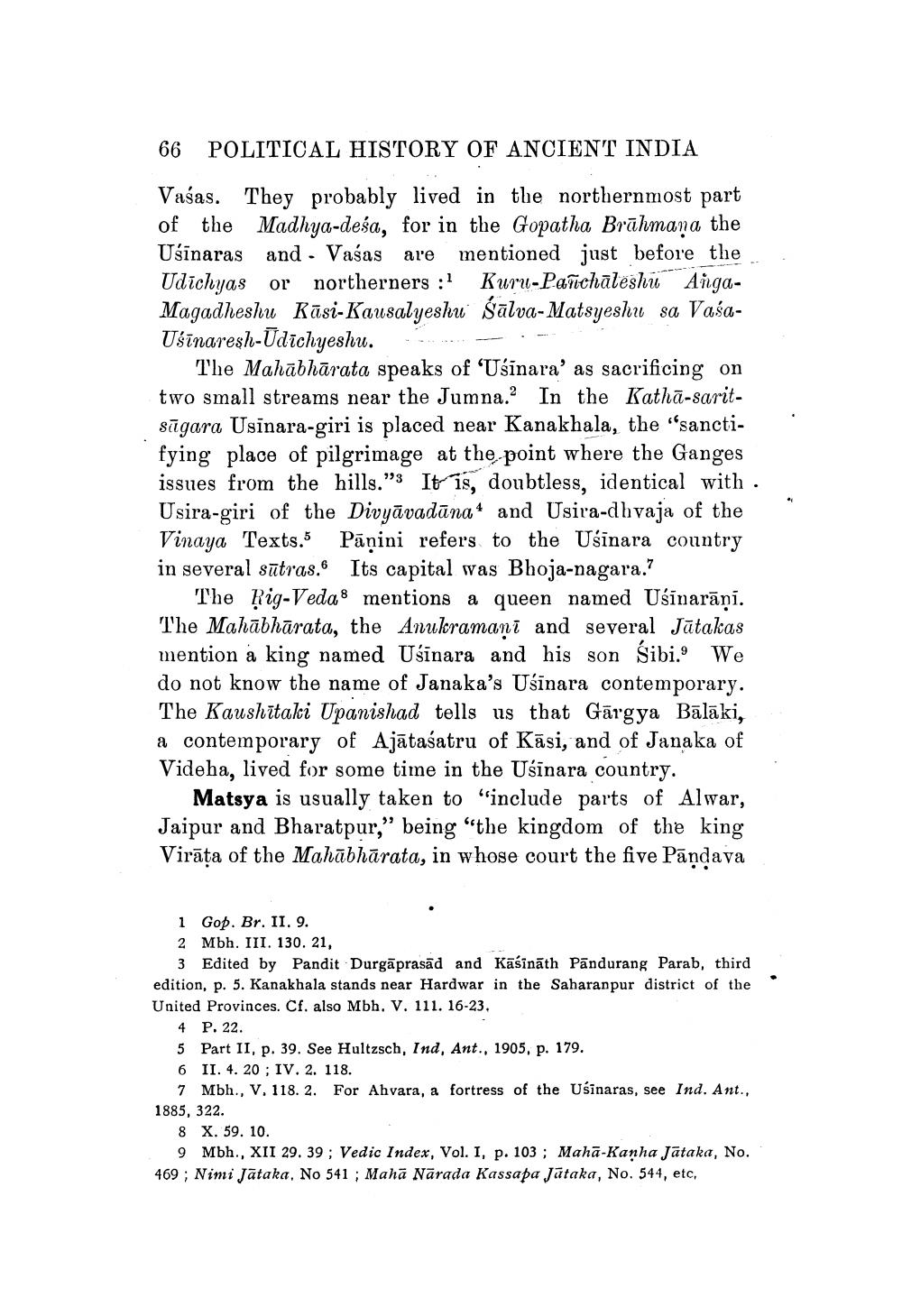________________
66 POLITICAL HISTORY OF ANCIENT INDIA
Vaśas. They probably lived in the northernmost part of the Madhya-deśa, for in the Gopatha Brāhmaṇa the Uśīnaras and . Vaśas are mentioned just before the Udichyas or northerners :: Kuru-Panchāleshu AngaMagadheshu Kāsi-Kausalyeshu Śālva-Matsyeshu sa VasaUśīnaresh-Udichyeshu. --
The Mahābhārata speaks of 'Usinara' as sacrificing on two small streams near the Jumna. In the Kathā-saritsūgara Usīnara-giri is placed near Kanakhala, the "sanctifying place of pilgrimage at the point where the Ganges issues from the hills."3 It is, doubtless, identical with . Usira-giri of the Divyāvadāna+ and Usira-dhvaja of the Vinaya Texts.5 Pānini refers to the Usinara country in several sūtras. Its capital was Bhoja-nagara.?
The Rig-Vedas mentions a queen named Usinarāni. The Mahābhārata, the Anukramanī and several Jātakas mention a king named Usinara and his son Sibi. We do not know the name of Janaka's Ušīnara contemporary. The Kaushitaki Upanishad tells us that Gārgya Bālāki, a contemporary of Ajātaśatru of Kāsi, and of Janaka of Videha, lived for some time in the Uśīnara country.
Matsya is usually taken to "include parts of Alwar, Jaipur and Bharatpur," being “the kingdom of the king Virāța of the Mahābhārata, in whose court the five Pāņdava
1 Gop. Br. II. 9. 2 Mbh. III. 130. 21,
3 Edited by Pandit Durgāprasad and Kašināth Pāndurang Parab, third edition, p. 5. Kanakhala stands near Hardwar in the Saharanpur district of the United Provinces. Cf. also Mbh. V. 111. 16-23.
4 P. 22. 5 Part II, p. 39. See Hultzsch, Ind, Ant., 1905, p. 179. 6 II. 4. 20; IV. 2. 118.
7 Mbh., V, 118.2. For Ahvara, a fortress of the Usinaras, see Ind. Ant., 1885, 322.
8 X. 59. 10.
9 Mbh., XII 29. 39 ; Vedic Index, Vol. I, p. 103 ; Mahā-Kanha Jātaka, No. 469 ; Nimi Jataka, No 541 ; Maha Narada Kassapa Jataka, No. 544, etc,




